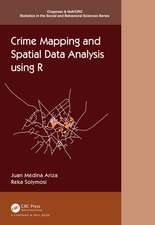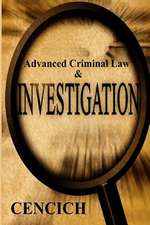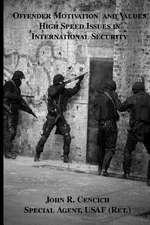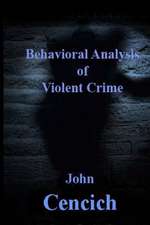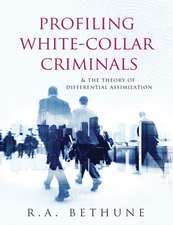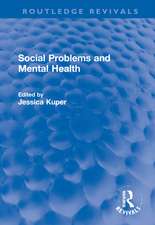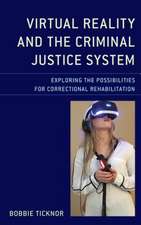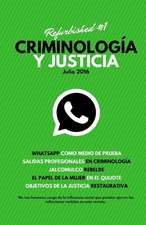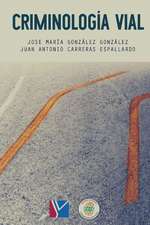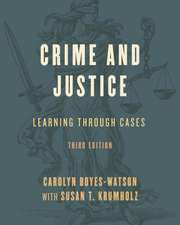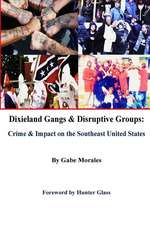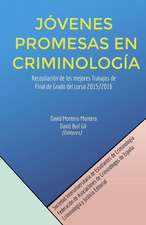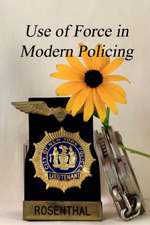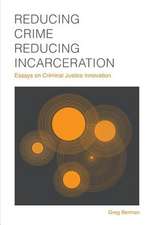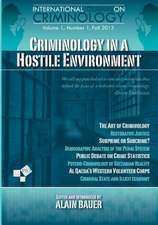A Beginner’s Guide to Statistics for Criminology and Criminal Justice Using R
Autor Alese Wooditch, Nicole J. Johnson, Reka Solymosi, Juanjo Medina Ariza, Samuel Langtonen Limba Engleză Paperback – 5 iun 2022
This volume will help users master the fundamentals of the R programming language, providing tutorials in each chapter that lay out research questions and hypotheses centering around a real criminal justice dataset, such as data from the National Survey on Drug Use and Health, National Crime Victimization Survey, Youth Risk Behavior Surveillance System, The Monitoring the Future Study, and The National Youth Survey. Users will also learn how to manipulate common sources of agency data, such as calls-for-service (CFS) data. The end of each chapter includes exercises that reinforce the R tutorial examples, designed to help master the software as well as to provide practice on statistical concepts, data analysis, and interpretation of results. The text can be used as a stand-alone guide to learning R or it can be used as a companion guide to an introductory statistics textbook, such as Basic Statistics in Criminal Justice (2020).
| Toate formatele și edițiile | Preț | Express |
|---|---|---|
| Paperback (1) | 364.19 lei 3-5 săpt. | +26.34 lei 4-10 zile |
| Springer International Publishing – 5 iun 2022 | 364.19 lei 3-5 săpt. | +26.34 lei 4-10 zile |
| Hardback (1) | 495.04 lei 3-5 săpt. | +34.30 lei 4-10 zile |
| Springer International Publishing – 4 iun 2021 | 495.04 lei 3-5 săpt. | +34.30 lei 4-10 zile |
Preț: 364.19 lei
Preț vechi: 438.78 lei
-17% Nou
Puncte Express: 546
Preț estimativ în valută:
69.71€ • 71.83$ • 58.85£
69.71€ • 71.83$ • 58.85£
Carte disponibilă
Livrare economică 10-24 februarie
Livrare express 24-30 ianuarie pentru 36.33 lei
Preluare comenzi: 021 569.72.76
Specificații
ISBN-13: 9783030506278
ISBN-10: 3030506274
Pagini: 330
Ilustrații: XIV, 330 p. 403 illus., 373 illus. in color.
Dimensiuni: 178 x 254 x 27 mm
Greutate: 0.6 kg
Ediția:1st ed. 2021
Editura: Springer International Publishing
Colecția Springer
Locul publicării:Cham, Switzerland
ISBN-10: 3030506274
Pagini: 330
Ilustrații: XIV, 330 p. 403 illus., 373 illus. in color.
Dimensiuni: 178 x 254 x 27 mm
Greutate: 0.6 kg
Ediția:1st ed. 2021
Editura: Springer International Publishing
Colecția Springer
Locul publicării:Cham, Switzerland
Cuprins
1. Getting started.- 2. Managing your data.- 3. Data visualization.- 4. Spatiotemporal data visualization and basic crime analysis.- 5. Descriptive statistics: measures of central tendency.- 6. Descriptive statistics: measures of dispersion.- 7. Statistical inference in criminal justice research.- 8. Defining the observed significance level of a test.- 9. Hypothesis testing using the binomial distribution.- 10. Chi-square: a test commonly used for nominal-level measures.- 11. The normal distribution and its application to tests of statistical significance.- 12. Comparing means in two samples.- 13. Analysis of variance.- 14. Measures of association for nominal and ordinal variables.- 15. Measuring association for interval data.- 16. Introduction to regression analysis.
Notă biografică
Alese Wooditch is an assistant professor of criminal justice at Temple University. Her research interests include crime and place, quantitative methods, and evaluation research.
Nicole Johnson is a doctoral student in the Department of Criminal Justice at Temple University. Her research interests include understanding group- and community-level behavioral dynamics, particularly those related to crime and responses to crime.
Reka Solymosi is a lecturer in quantitative methods at the Department of Criminology at University of Manchester, and a member of the Software Sustainability Institute. Her research focuses on making use of new forms of data to gain insight into people's behaviour and subjective experiences, particularly focusing on crime, victimisation, transport, and spatial research.
Juanjo Medina is professor of quantitative criminology and Head of the Criminology Department at the University of Manchester. His research focuses on gender violence, gangs, crime prevention, and data science applications to criminal justice. Samuel Langton is a researcher in quantitative criminology at Manchester Metropolitan University. His research primarily focuses on describing and explaining the spatial and temporal patterning of known offender residences.
Reka Solymosi is a lecturer in quantitative methods at the Department of Criminology at University of Manchester, and a member of the Software Sustainability Institute. Her research focuses on making use of new forms of data to gain insight into people's behaviour and subjective experiences, particularly focusing on crime, victimisation, transport, and spatial research.
Juanjo Medina is professor of quantitative criminology and Head of the Criminology Department at the University of Manchester. His research focuses on gender violence, gangs, crime prevention, and data science applications to criminal justice. Samuel Langton is a researcher in quantitative criminology at Manchester Metropolitan University. His research primarily focuses on describing and explaining the spatial and temporal patterning of known offender residences.
Textul de pe ultima copertă
This book provides hands-on guidance for researchers and practitioners in criminal justice and criminology to perform statistical analyses and data visualization in the free and open-source software, R. It offers a step-by-step guide for beginners to become familiar with the RStudio platform.
This volume will help users master the fundamentals of the R programming language, in addition to program basics. Tutorials in each chapter lay out research questions and hypotheses that center around a real criminal justice dataset, such as data from the National Youth Survey, Law Enforcement Management and Administrative Statistics (LEMAS)-Body Worn Camera Survey, the Survey of Inmates in State and Federal Correctional Facilities (SISFCF), the National Crime Victimization Survey (NCVS), the British Crime Survey/Crime Survey for England and Wales, and the Seattle Neighborhoods and Crime Survey. At the end of each chapter are exercises that reinforce the R tutorial examples, designed to help master the software, as well as to provide practice on statistical concepts, data analysis, and interpretation of results.
The text can be used as a stand-alone guide to learning R or it can be used as a companion guide to an introductory statistics textbook, such as Basic Statistics in Criminal Justice (2020).
The text can be used as a stand-alone guide to learning R or it can be used as a companion guide to an introductory statistics textbook, such as Basic Statistics in Criminal Justice (2020).
Caracteristici
The first R textbook aimed specifically at the needs of criminology and criminal justice researchers Helps readers master program basics such as R file types, importing and exporting data, data types and structures, data cleaning, different types of loops, and writing functions Covers statistical analyses and data manipulation techniques to include measures of central tendency and dispersion, chi-squared, t-tests, analysis of variance, hypothesis testing, regression, and data visualizations and graphics

